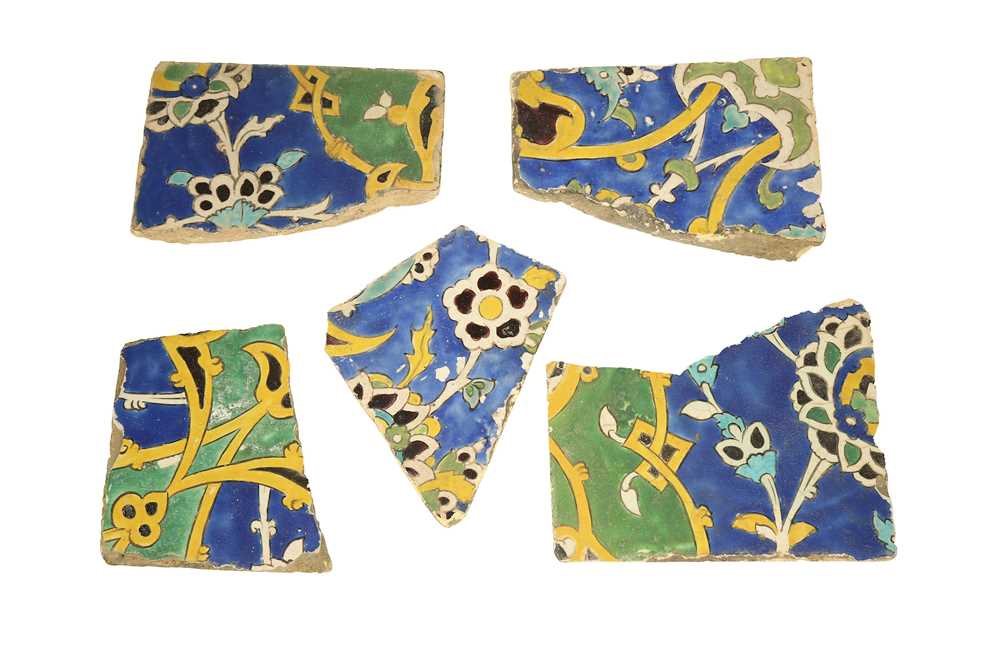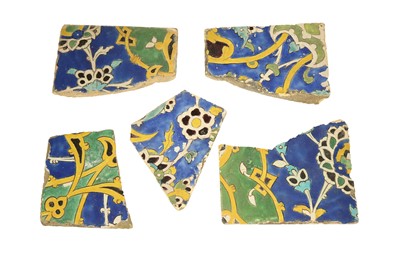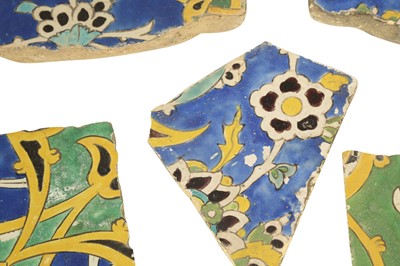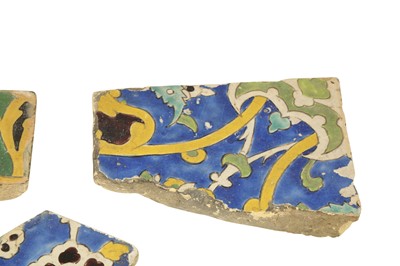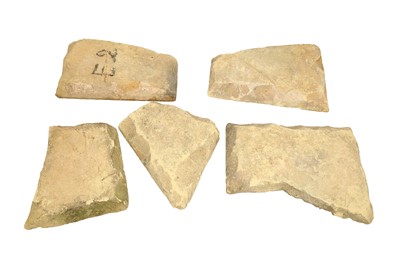29th Oct, 2021 14:00
Islamic & Indian Art
FIVE FRAGMENTARY SAFAVID CUERDA SECA POTTERY TILES: THE GARDEN
Iran, 17th century
FIVE FRAGMENTARY SAFAVID CUERDA SECA POTTERY TILES: THE GARDEN
Iran, 17th century
Comprising five, differently sized and fragmentary tiles, possibly from the same original composition, painted in deep cobalt blue, green, yellow, turquoise and manganese purplish-black on a white ground, produced using the Andalusian cuerda seca technique, decorated with floral stems of rosettes and lotus flowers, the largest fragment 23cm x 21.5cm at greatest points.
The cuerda seca technique was widely in use in Timurid and Safavid Iran. During the Timurid era, tile mosaics (haft rang technique) and cuerda seca panels were often seen side by side. Instead, during the Safavid era, the less time-consuming nature of the cuerda seca technique led to the gradual disappearance of the rather complex and laborious haft rang panels.
As the Safavids expanded their pottery manufacturing, their motifs and design repertoire expanded too and started including relatively uniform and standardised designs, often vegetal and floral, like the ones in our lots 505, 506, and 507. It was common for large areas of a building or structure to be covered in the same repeating floral motifs.
Do you have an item similar to the item above? If so please click the link below to submit a free online valuation request through our website.
